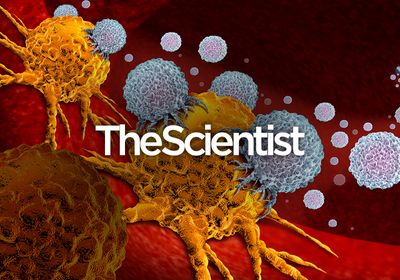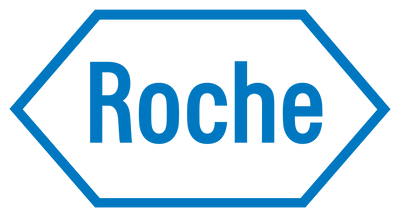
To understand the inappropriate immune responses that lead to autoimmune disorders, scientists must untangle a complex web of environmental and genetic risk factors. One common autoimmunity risk variant—a mutation that switches an arginine to a tryptophan (R620W) in the protein tyrosine phosphatase non-receptor type 22 (PTPN22) gene—associates with numerous autoimmune disorders and nearly doubles a person’s risk of type 1 diabetes, systemic lupus erythematosus, and rheumatoid arthritis.1 PTPN22 is highly expressed in lymphocytes where it influences T cell receptor (TCR) signaling and T cell activation. While PTPN22 R620W is well known, it is not well understood, leading to opposing opinions about the variant’s consequences.2
When a T cell receptor (TCR) binds its target antigen, a signaling cascade initiates within the cell, driving its proliferation and activation. PTPN22 negatively regulates this response by dephosphorylating key proteins in the pathway.3 The R620W mutation keeps PTPN22 from making it to the membrane where the proteins it interacts with reside.4 To determine the broader consequences of this mislocalization, researchers genetically engineered this variant into mice and found an increase in T cell signaling and activation. In contrast, R620W variant T cells taken from humans had the opposite response—their T cells were less activated.2
New data presented in eLife from David Rawlings, a professor of pediatrics at the University of Washington and the director of the Center for Immunity and Immunotherapies at Seattle Children’s Research Institute, help make sense of these discrepancies.5 Warren Anderson, a postdoctoral researcher in Rawlings’s laboratory, spearheaded an ambitious project to study the R620W variant using a new gene editing approach. Anderson and Rawlings suspected that the human and mouse data conflicted because the researchers performing the human studies used T cells from patients with existing autoimmune diseases who had been exposed to activating antigens throughout their lives. Over time, this overstimulation leads to exhausted T cells with decreased activation. By studying primary T cells that are naïve to antigen exposure, Rawlings’s team revealed the risk variant’s function in the absence of overstimulation.
It brings together the mouse and human data in a way that we hadn't been able to do before.
– Robert Salmond, Leeds Institute of Medical Research at St James's
Using CRISPR gene editing, the researchers constructed a naïve primary T cell line with the R620W mutation, a control line with a non-risk mutation, and a complete PTPN22 knockout. Rawlings and his team found that both cell lines had increased TCR signaling when stimulated, similar to observations from previous mouse studies. To their knockout cell population, the researchers next added TCRs that reacted to a human self antigen targeted in type 1 diabetes patients. “That is one of the diseases where this risk variant is…increasing the risk,” said Rawlings. “We wanted to use a [self-reactive] TCR that sees the self antigen in a physiologic setting.”
Using lentiviral delivery, Rawlings and his team loaded the T cells with low- and high-avidity receptors—TCRs that would either weakly or strongly bind the self antigen. Previously, researchers found that PTPN22 repressed T cell activation by antigens that weakly bound to the TCR.6 Rawlings thought that the R620W mutation might enhance autoimmunity by activating T cells with low-avidity TCRs that recognized self antigens. He was correct—the PTPN22 mutant T cells harboring low-avidity TCRs had overblown responses to their antigen. “Expression of this [variant] seems to be rendering the T cells more responsive to the types of antigens that under normal circumstances you'd want to ignore,” said Robert Salmond, an associate professor at Leeds Institute of Medical Research at St. James's at the University of Leeds, who was not involved in this study.
Thanks to their complex CRISPR editing strategy in primary human T cells, Rawlings’s team obtained results that supported the validity of the R620W variant data from previous mouse studies. “It brings together the mouse and human data in a way that we hadn't been able to do before,” said Salmond. By getting to the root of the variant’s effects, Rawlings thinks that these results could lead to better treatments for autoimmune disorders. “There are groups that have been trying to make inhibitors of [PTPN22] and proposing to use those as therapeutics. Our data would say that's not a good idea,” said Rawlings. “It wouldn't be a good strategy to treat patients with an inhibitor of a negative regulator.”
References
- Tizaoui K, Shin JI, Jeong GH, et al. Genetic Polymorphism of PTPN22 in Autoimmune Diseases: A Comprehensive Review. Medicina (Kaunas). 2022;58(8):1034. doi:10.3390/medicina58081034
- Rawlings DJ, Dai X, Buckner JH. The Role of PTPN22 Risk Variant in the Development of Autoimmunity: Finding Common Ground between Mouse and Human. The Journal of Immunology. 2015;194(7):2977-2984. doi:10.4049/jimmunol.1403034
- Wu J, Katrekar A, Honigberg LA, et al. Identification of Substrates of Human Protein-tyrosine Phosphatase PTPN22 *. Journal of Biological Chemistry. 2006;281(16):11002-11010. doi:10.1074/jbc.M600498200
- Bottini N, Musumeci L, Alonso A, et al. A functional variant of lymphoid tyrosine phosphatase is associated with type I diabetes. Nat Genet. 2004;36(4):337-338. doi:10.1038/ng1323
- Anderson W, Barahmand-pour-Whitman F, Linsley PS, Cerosaletti K, Buckner JH, Rawlings DJ. PTPN22 R620W gene editing in T cells enhances low-avidity TCR responses. Malissen B, Taniguchi T, Cope A, Chan AC, eds. eLife. 2023;12:e81577. doi:10.7554/eLife.81577
- Salmond RJ, Brownlie RJ, Morrison VL, Zamoyska R. The tyrosine phosphatase PTPN22 discriminates weak self peptides from strong agonist TCR signals. Nat Immunol. 2014;15(9):875-883. doi:10.1038/ni.2958






